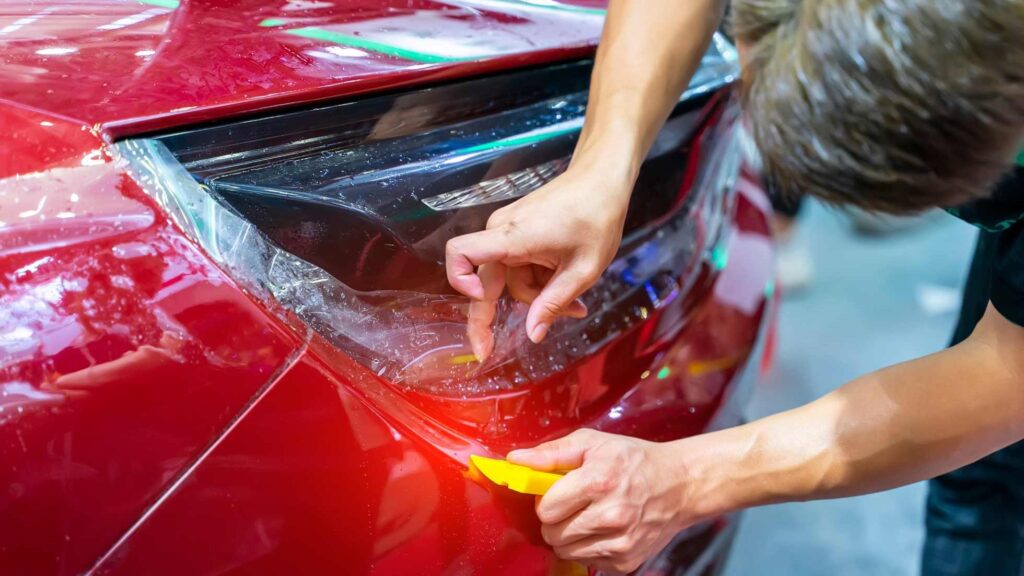In the realm of automotive protection, Full Paint Protection Film (PPF) installation has risen as a formidable guardian, offering vehicle owners an unyielding shield against the rigors of everyday driving. Yet, like any significant decision, the choice to invest in Full PPF Installation bears its own set of pros and cons. In this comprehensive guide, we’ll embark on a journey to explore the advantages and disadvantages of Full PPF Installation, empowering you to make an enlightened choice for the safeguarding of your vehicle’s pristine glory.
The Pros of Full PPF Installation:
- Unrivaled Protection:
- Benefit: Full PPF Installation serves as a comprehensive defense against a plethora of road hazards. It acts as a stalwart guardian, shielding your vehicle’s paint from stone chips, road debris, scratches, and minor dings, ensuring that your car’s exterior remains immaculate.
- Preserves Resale Value:
- Benefit: Investing in Full PPF Installation can yield substantial returns when the time comes to sell or trade in your vehicle. The film acts as a protective fortress, preserving the original paint and augmenting your car’s resale value.
- Enhanced Aesthetics:
- Benefit: PPF Installation is a master of subtlety, nearly invisible when correctly applied. It doesn’t alter your vehicle’s appearance; instead, it elevates it by retaining a glossy, showroom-worthy finish.
- Low Maintenance:
- Benefit: Unlike the demands of waxing or polishing, Full PPF Installation is a low-maintenance champion. It stands resilient against stains, environmental contaminants, and fading, reducing the need for incessant detailing.
- Self-Healing Properties:
- Benefit: Some advanced PPF films boast self-healing prowess. Minor scratches or swirl marks gracefully vanish when exposed to heat, ensuring your car always wears its best attire.
- Longevity:
- Benefit: When executed by seasoned professionals and adequately maintained, Full PPF Installation can stand the test of time, ultimately evolving into a cost-effective investment.
The Cons of Full PPF Installation:
- Cost:
- Drawback: The primary deterrent of Full PPF Installation is its initial cost. Quality installation can be a substantial investment, with the price fluctuating based on the vehicle’s size and installation complexity.
- Installation Time:
- Drawback: Installing Full PPF is a meticulous undertaking, consuming several hours. Prepare for some downtime if you opt for this level of protection.
- Not Completely Damage-Proof:
- Drawback: While PPF can thwart numerous forms of damage, it’s not impervious. Extraordinarily high-impact incidents or accidents can still leave a mark on your vehicle’s paint.
- Limited Coverage:
- Drawback: Full PPF Installation typically encompasses the front end of the vehicle, including the hood, fenders, and bumper. Other vulnerable areas, such as side mirrors or the roof, may remain exposed.
- Professional Installation Required:
- Drawback: For optimal results and maximum protection, Full PPF Installation demands the expertise of seasoned professionals. DIY endeavors might result in subpar installation.
- Maintenance Required:
- Drawback: While PPF stands as a low-maintenance alternative to traditional detailing, it still requires periodic care, including regular cleaning and inspections, to ensure it maintains its effectiveness.
In Conclusion: Full PPF Installation extends an exceptional level of protection and aesthetic enhancement for your vehicle. Its merits, encompassing the preservation of resale value, aesthetic enhancement, and enduring protection, render it a compelling choice for numerous car owners. However, it’s essential to consider the initial cost and the necessity of professional installation, alongside the understanding that it may not render your vehicle entirely invulnerable to damage. Ultimately, the decision to embrace Full PPF Installation hinges on your priorities and the level of protection you seek for your cherished automobile.


